I fell in love with birding about four years ago and one of the reasons was a trip we made to Salineño, Texas. Driving there, we were stopped by a pleasant Border Patrol officer who was exiting the rutty dirt road that goes down to the site. A Vermont couple with a dog did not interest him — we essentially just exchanged greetings. It was our first encounter with the sensitivity of the area where you can essentially wade the Rio Grande. (And people have for decades, and still do.)
Salineño is just north of Roma on Route 83.
Entering a tract, which has been a famous birding spot since the 1970’s, we encountered a small group of birders sitting in lawn chairs watching the many bird feeding stations. And what an array of great birds Mary and I saw: Green Jays everywhere, Great Kiskadees, and all three orioles (Altimira, Hooded, and Audubon’s.) It was an immersion into a new world of color and activity, just amazing. The Hooded Oriole was the first of ten life birds I’ve gotten there during a half-dozen visits.
Salineño is a must-stop on any birding tour of the area. The parking lot, right on the river, is a great spot for all sorts of birds. We were there in 2012, arriving just as a large tour group came out of the woods, excited about some of their observations. They had seen Red-billed Pigeons in the trees far up the river. As they were just about to stow their gear and head to their next destination, their leader yelled, “Ducks – Muscovy’s” as a flight of four came right over us. It was a lifer for me and I’m sure, many of the group members. They piled happily into their cars to hit their next destination.
A predominantly Mexican bird, the Audubon’s Oriole reaches the United States only in southern Texas.
For many years, the little tract of wooded land were we visited the feeders was owned and maintained by Pat and Gail DeWind who then sold it to the Valley Land Fund, a non-profit that protects over 10,000 acres of land up and down the Rio Grande Valley. Volunteers, led by Cheryl Longton of Massachusetts, have maintained the feeders each winter, relying on donations from birders and others. Last winter, the site was closed and the feeders moved just north to Fish and Wildlife land but it is expected that the original site will re-open this winter.
Merle and Lois, two of the long-time volunteers, fill a feeding station.
The Altamira Oriole is a bird of Mexico and Central America whose range just reaches into southern Texas. They are often seen at Salineño.
The woodland along the River at Salineño is an excellent spot for finding Valley birds such as Audubon’s Oriole, White-tipped Dove, Groove-billed Ani (summer is best), Long-billed Thrasher, Green Jay, and (now infrequently) Brown Jay. The parking lot is a great gathering spot for birders and a favorite spot to wait for fly-by kingfishers (all three species), Muscovy, or Hook-billed Kite. While standing at the River, you may see such waterbirds as Least or Caspian tern, Black Skimmer, various large waders, and Ring-billed Gull. During spring, Bank Swallows, Indigo Buntings, and Dickcissels stream across the River from Mexico. In winter, the River may be filled with both dabbling and diving ducks. Mergansers and (rarely) scoters occur as well. Check the boulders in winter for Black Phoebe and Spotted Sandpiper.
One of the target birds on our last trip was the Brown Jay. One had been seen fairly reliably before we got into the area but on several tries at Salineño (you just missed it!) and up the river at another spot, we finally waited it out at the feeders and watched as a juvenile ate his heart out. Birders from all over the country and Canada were snapping pictures. As was I.
Brown Jays are resident of a short stretch of Rio Grande corridor from about Salineño to the woodlands below Falcon Dam
So, make Salineño a stop on a trip to the area. Many birders also hit Chapeno, Falcon Dam, Falcon State Park, and work their way up to Zapata. A list of potential birds is mouth-watering: White-collared Seedeaters, Pyrrhuloxia, Harris’ Hawk, Verdin, Scaled Quail, Golden-fronted and Ladder-backed Woodpeckers, Cactus Wren, Black-throated Sparrow, Long-billed and Curve-billed Thrasher, and Chihuahuan Raven. Good Birding, indeed!

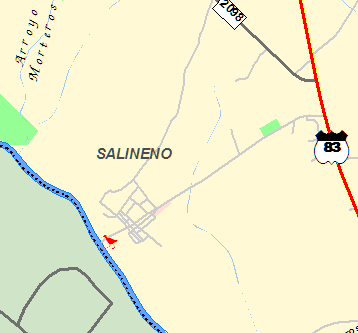

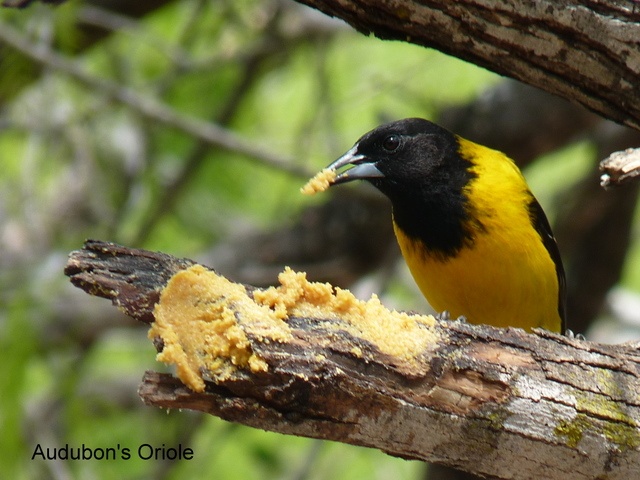
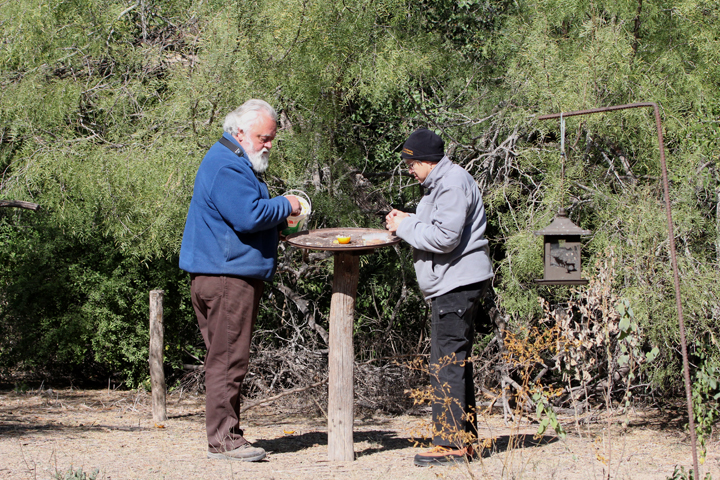
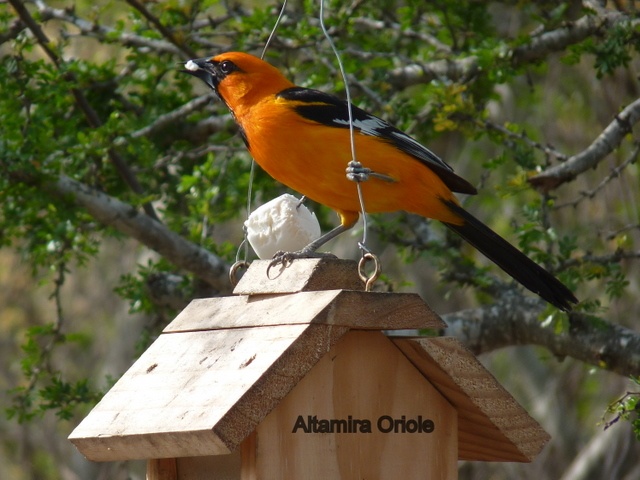
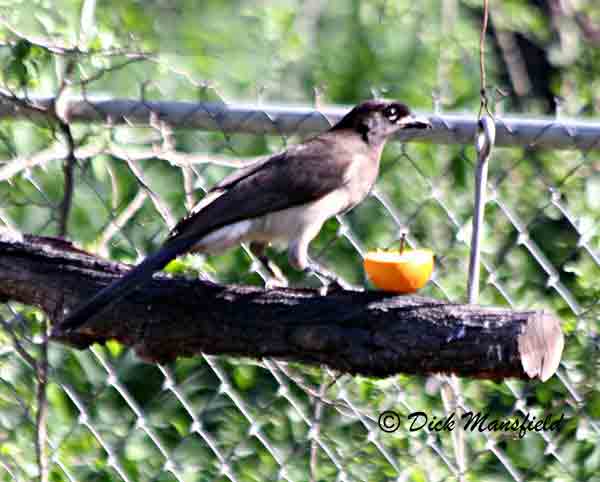
thanks for sharing your photos. Did an Elderhostel a few years back, Rio Grande, Falcon Dam etc. great birds. Brown jays are really quite large as jays go. Never did get the red billed pigeon
Merle was still there when we went this year. It was a treat anyone who is even remotely close to the area should experience even if you think birding isn’t your “thing”. It will be after a trip to Salineno.
Salineño Preserve will once again open to the public on November 1, 2023. It’s future is uncertain after that. The CBP has announced that it intends to build another section of the barrier wall adjacent to the Valley Land Fund property. They were not successful in acquiring the actual Preserve land two years ago but apparently have or will have the land adjacent to it and plan to erect a thirty foot barrier with cleared land on each side and flood lights. It’s obvious that the impact on the birds, wildlife and the operation of the Preserve will be devastating. There is an opportunity to make comments on the document for a short time, it closes September 15. Go to Friends of Salineño on Facebook and scroll down to Catarina Galindo’s post to access the CBP document and the information for where to send comments is at the very end. Tell your birding friends. Evidence of the importance of this site might have an influence on whether Salineño Preserve is spared or walled off from the public.